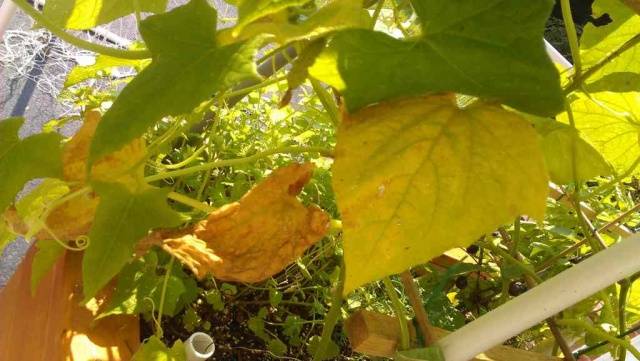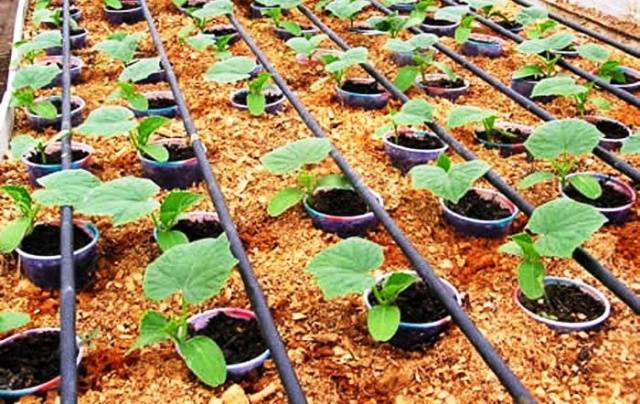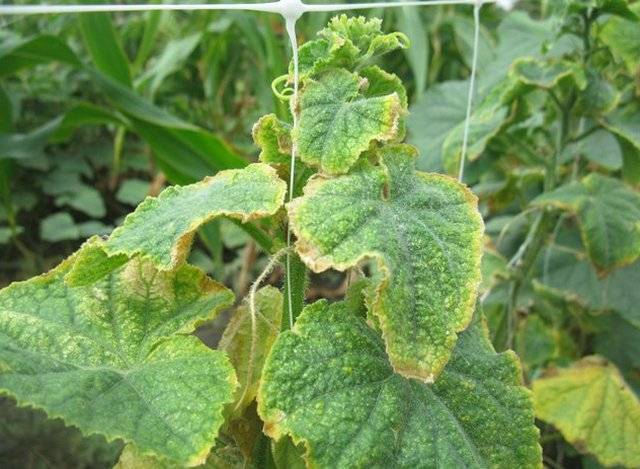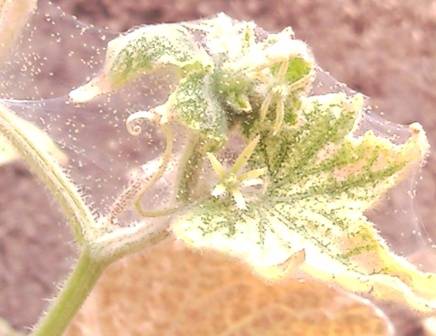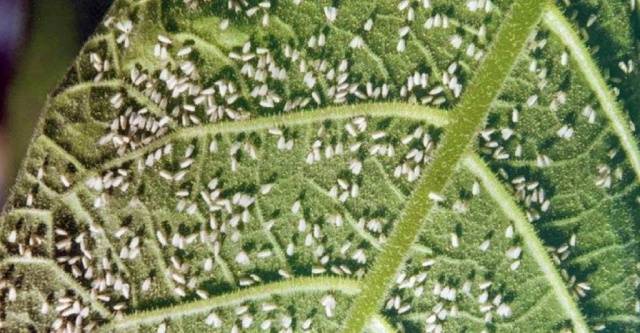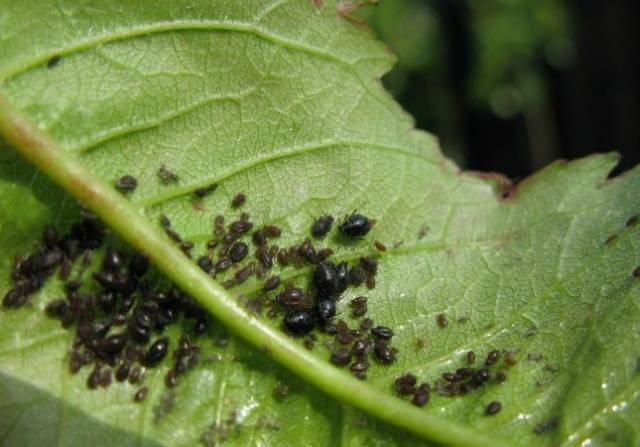Content
You can understand why the leaves of cucumbers dry in a greenhouse after a careful study of the conditions for growing vegetables. There can be many reasons: from improper watering and an excess of fertilizers to the attack of insect pests or the occurrence of viral diseases. By eliminating the error, you can quickly restore the normal state of the cucumber bushes and save the harvest.
Dry leaves: what could be the cause
Cucumbers are a rather capricious culture. Beginners taking their first steps in vegetable growing have to face many problems, one of which is the gradual yellowing and drying of the leaves. There can be many reasons, among the main ones:
- insufficient watering;
- too dry air in the greenhouse;
- excess or lack of nutrients in the soil;
- damage to the plant by insect pests;
- sunburn;
- viral or fungal disease.
To understand what exactly caused the leaves to dry out, it is important to examine the affected plant. Look for the appearance of affected leaves, their color, dust, cobwebs, dots, or spots. Much depends on the general condition of the cucumber bush, as well as on how the rest of the plantings look.
Care problems
Dry leaves can appear even in very young seedlings. Among the main reasons:
- lack of moisture;
- improper soil composition;
- insufficient or excess nutrition;
- unsuccessful place for planting;
- too dry indoor air.
For planting seeds, you cannot use purchased soil, it is not nutritious enough. The ideal option is a mixture of garden soil with peat or humus.
It is possible to add a small amount of sand. Heavy clay soils cause stagnant moisture, leaves on plants will turn yellow and fall off. It is important to use the same soil that will be spread over the beds in the greenhouse.
A sudden change in soil can affect the condition of the plants, they will stop growing and begin to shed their leaves.
Proper watering is very important. It is necessary to use only warm water, thawed, settled or boiled. Hard or cold water can shock young plants, the leaves begin to curl up and dry out and then fall off. The same phenomenon is observed with insufficient watering.
It is necessary to moisten the ground in containers with seedlings every day, until the shoots appear, the boxes are covered with plastic wrap.
Young plants need to be protected from drafts and sudden changes in temperature.
Before planting, a complex mineral fertilizer is applied to the soil. Feeding with a minimum nitrogen content is preferred, it can also affect the condition of the leaves. Instead of mineral complexes, you can use organic matter: an aqueous solution of mullein or bird droppings. After feeding, the plants must be watered with clean warm water. Fertilizer on the leaves will dry them out, weakening the plants.
Features of the content in the greenhouse
Too dry air can affect the condition of the leaves. For normal growth of cucumbers, a constant moisture level of at least 85% is required. Irrigation barrels placed next to the plantings will help provide the right atmosphere. Sprinkler irrigation is very useful, moisture is sprayed over the plants, maintaining the normal condition of the leaves and stems. If there is no rain installation, cucumbers are watered from a hose with a fine-mesh spray.
Many gardeners install an automatic drip irrigation system in the greenhouse.
It provides normal soil moisture without the presence of the owner, saves water.In order not to harm the cucumbers, it is necessary to organize a water settling system without connecting the irrigation unit directly to the water pipes. If this is not done, cold water will flow to the roots of the plants, which can cause rotting of the roots and rapid drying of the leaves.
Very often, the leaves dry out due to direct sunlight. Bright sun is especially dangerous after watering. Water drops act as lenses, refracted rays burn holes in cucumber leaves, plants begin to wither and dry. In hot sunny weather, it is necessary to close the glass with special curtains.
The reason for the drying of the leaves can be the wrong choice of fertilizers. To understand what cucumbers lack, it is enough to carefully inspect the planting.
With a lack of nitrogen, the leaves become pale, lethargic, gradually dry out and fall off.
A lack of phosphorus will be indicated by very dark leaves with a purple tint, they wrinkle, become brittle and brittle. With a magnesium deficiency, the leaves turn brown, dry quickly and fly around.
To correct the situation, an aqueous solution of complex fertilizers, which is applied before transplanting seedlings into the greenhouse, will help. During the season, the plants need to be fed 2-3 more times. Birch ash is very useful, and diluted bird droppings are also suitable. After fertilization, the planting must be watered, this will help avoid burns.
Diseases and pests
Greenhouse maintenance does not protect plants from pests.
Larvae and adult insects suck sap from plants, leaves dry out, turn yellow and fall off. The most common pests include spider mites, aphids and whiteflies. The presence of a tick is indicated by thin whitish filaments on the petioles and stems.
Whitefly can be recognized by the light dots on the back of the leaves.
The lashes affected by aphids become covered with a sticky bloom. With severe damage, the leaves weaken, turn pale, dry out. Insect larvae suck out juices, preventing plants from developing normally.
You need to deal with pests comprehensively. Obligatory destruction weeds, when ventilating, the windows of the greenhouses are tightened with gauze. Affected plants are abundantly sprayed with a solution of potassium permanganate or ready-made insecticides. Chemical treatment can only be carried out before flowering.
Cucumber leaves can also dry out due to disease. Plants are often affected by viruses that cause spotting, yellowing, and leaf curling. Diseased cucumber bushes need to be dug up and destroyed. As a preventive measure, spillage of the soil with a hot solution of potassium permanganate is used (the procedure is done before planting the plants). It is recommended to pickle seeds of cucumbers by soaking them for a short time in an aqueous solution of potassium permanganate or hydrogen peroxide.
A very common ailment is downy mildew.
This fungal disease can be provoked by: too abundant watering, cold water, infected planting material. Small yellowish spots appear on the leaves of diseased plants, which are gradually replaced by a noticeable bluish bloom. Affected leaves gradually curl, dry and fly around. The same fate awaits the ovary of cucumbers.
Spraying fudge with Bordeaux liquid or other copper-containing preparations will help fight downy mildew. Bushes with a high degree of damage are best dug up and burned. They cannot be placed in a compost heap, tenacious spores can cause diseases of other plants.
Drying cucumber leaves can talk about diseases, pests, and insufficient care. It is important to notice the problem early on and take action as soon as possible. Comprehensive treatment will help you quickly cope with the disease and save the future harvest.
